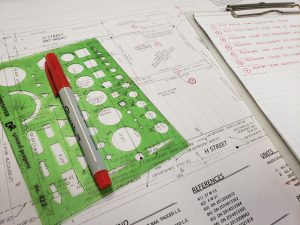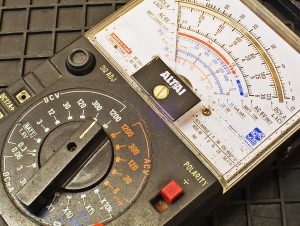Safety & Grounding: The Insurance Policy of Your Solar Setup
You can buy the fanciest panels, the beefiest inverter, and the best lithium batteries on the market, but if you skip safety, you’re basically building a rolling fire hazard. A well-designed solar system doesn’t just power your gear—it protects it (and you) from shorts, surges, and catastrophic “oops” moments.
This is where fuses, breakers, grounding, and bonding come in. They’re not optional add-ons—they’re the backbone of electrical safety.
Why Fusing Matters
Fuses and breakers exist to protect your wires, not your devices. If a short circuit sends too much current through a wire, the fuse pops before the wire overheats and melts. Think of them as cheap insurance against catastrophic failure.
-
Battery Protection: Every positive wire leaving your battery bank needs a fuse or breaker within 7–12 inches of the terminal.
-
Solar Panel Protection: In parallel configurations, each panel or string should be fused. In series, it’s less critical but still smart.
-
Inverter Protection: Inverters pull big current. Protect their lines with heavy-duty ANL fuses or breakers sized just above max draw.
Skipping fuses is like skipping seatbelts—fine until it isn’t.
Breakers & Disconnects
Breakers add convenience by resetting instead of replacing. Disconnect switches let you safely shut down sections of your system when working on it. At a minimum, install disconnects between:
-
Panels and charge controller
-
Charge controller and battery bank
-
Battery bank and inverter
This way, you can isolate faults and service equipment without working “hot.”
Grounding Basics
Grounding provides a safe path for fault current, lightning strikes, or stray voltage to dissipate instead of running through you (or your gear). In a trailer solar setup, grounding usually happens at two main levels:
-
Chassis Ground: Tie your battery negative to the trailer frame. This bonds the DC side of your system to the metal body.
-
Equipment Grounding: Charge controllers, inverters, and panel frames often have dedicated grounding lugs. Bond these to the chassis as well.
-
Panel Grounding: Panel frames should be connected together and bonded to the same chassis ground point.
This creates a “common reference” so that if something goes wrong, electricity has a predictable path to flow safely.
Neutral-to-Ground Bonding
Here’s where things get trickier—and where RV/cargo trailer solar setups often confuse people.
-
In Homes: At your main electrical panel, the neutral and ground are bonded together. This ensures overcurrent devices (breakers/fuses) work properly, and it establishes a single ground reference point.
-
In RVs/Trailers: Neutral and ground are typically kept separate onboard. Why? Because when you plug into shore power, the campground pedestal already has neutral-ground bonding at its main panel. If your RV also bonds them, you’d create a parallel path and risk shock hazards.
How It Applies to Solar & Inverters
-
Inverters: Some inverters automatically bond neutral to ground when producing AC power. Others keep them separate, or only bond when shore power isn’t connected. High-quality inverters (Victron, Magnum, etc.) often have internal switching relays that manage this safely.
-
All-in-One Power Stations: Most portable units output floating AC (neutral not bonded to ground). This works for most small appliances, but it may trip GFCI outlets or confuse sensitive equipment.
-
Best Practice:
-
If you’re wiring your inverter into a subpanel for trailer outlets, follow RV electrical standards—neutral and ground remain separate in your subpanel.
-
Let the inverter (or the shore power pedestal, when plugged in) handle the actual bond.
-
Only one neutral-ground bond should exist in a system. Multiple bonds create stray currents and shock risks.
-
Surge & Lightning Protection
If you camp in storm-prone areas, consider adding surge protectors on the AC side and lightning arrestors on the DC side. They divert dangerous spikes safely to ground before your electronics take the hit.
Fire Safety Extras
Even with perfect grounding and bonding, prepare for worst-case scenarios:
-
Carry a Class C fire extinguisher (rated for electrical fires).
-
Give hot-running equipment (inverters, controllers) plenty of ventilation.
-
Use marine-grade wiring where possible—it resists corrosion and heat better than automotive wire.
Practical Tips
-
Bond all grounds at a single point to avoid “ground loops.”
-
Always check your inverter’s manual—don’t assume how it handles neutral bonding.
-
Use a multimeter to verify continuity between neutral and ground. You want to know exactly when and where they connect.
-
Label your disconnects clearly—panic is a bad time to guess.
Wrapping It Up
Safety and grounding may not be as exciting as adding more watts of solar or upgrading to lithium, but they’re what stand between you and a melted mess of wires. Fuses, breakers, grounding, and careful neutral bonding aren’t “extras”—they’re essentials. Do it right once, and your system will hum along quietly for years. Do it wrong, and your first big trip may involve learning how to use that fire extinguisher.
Your Turn
-
Do you fuse every battery and panel line, or just the “big ones”?
-
Have you ever traced a ground fault or stray voltage issue in your camper?
-
Does your inverter bond neutral to ground, or leave it floating?
-
Would you add surge protection for storms, or consider it overkill?
-
Where’s your go-to spot for mounting disconnects—by the battery bank, or inside the cabin for easy access?






